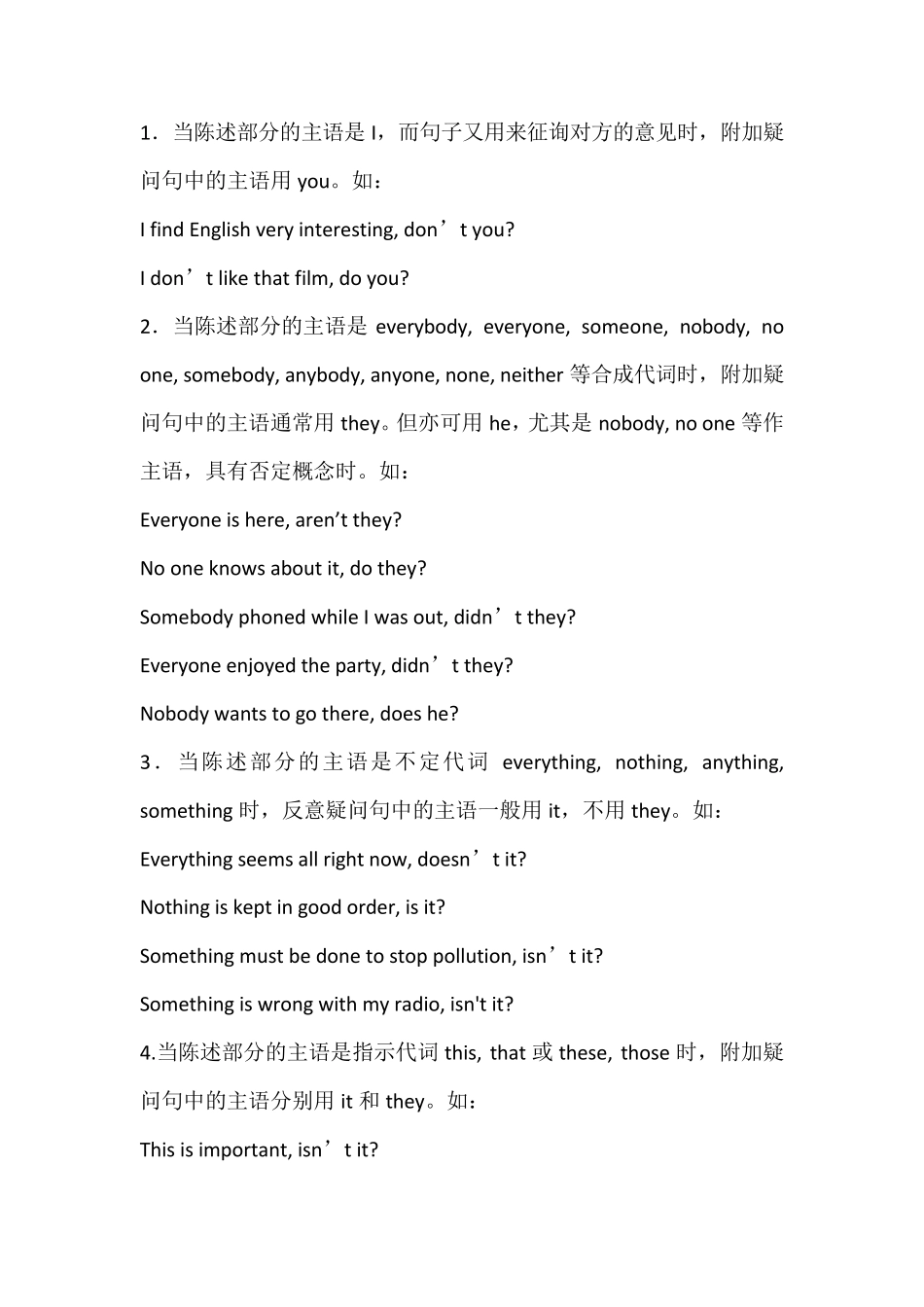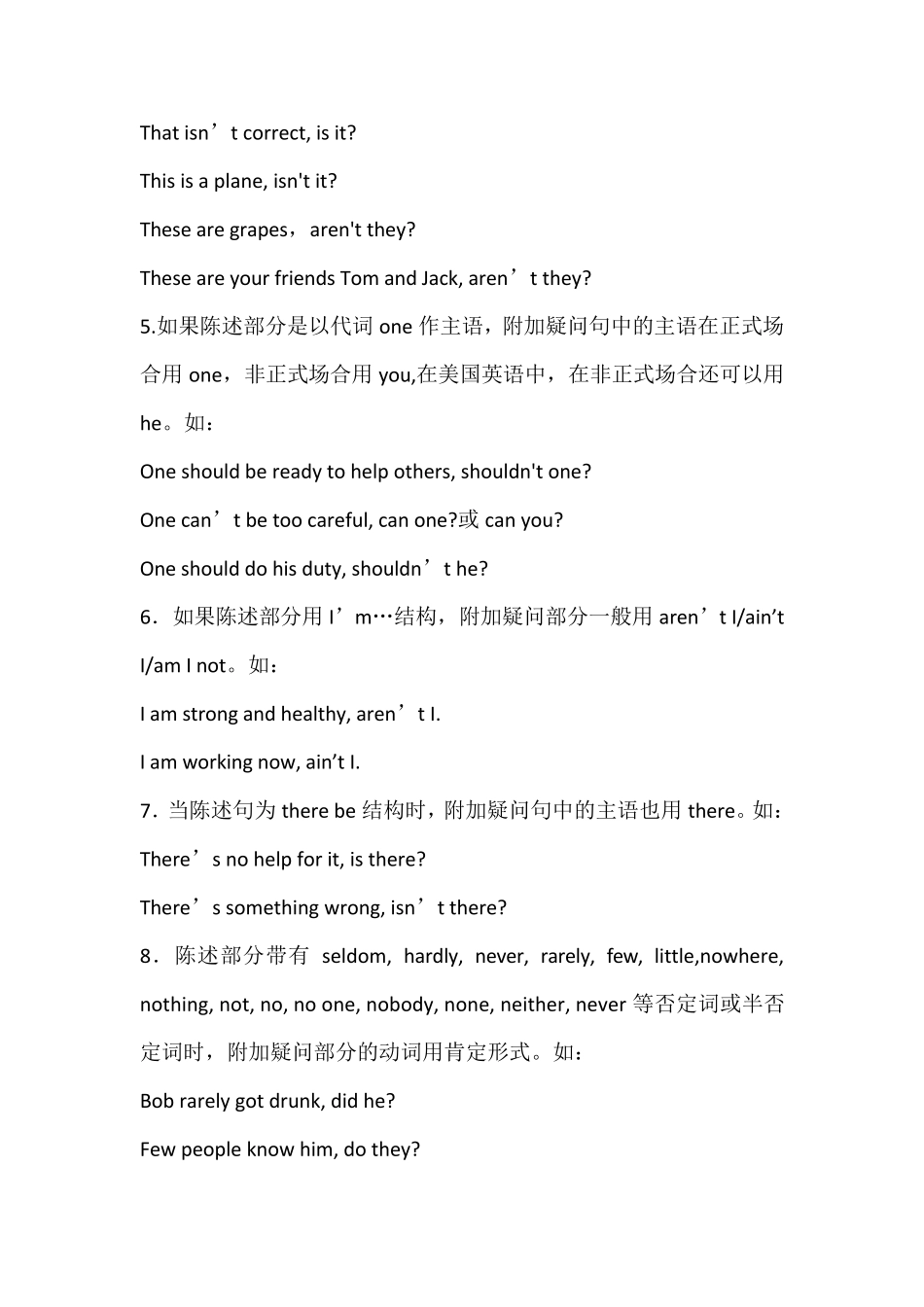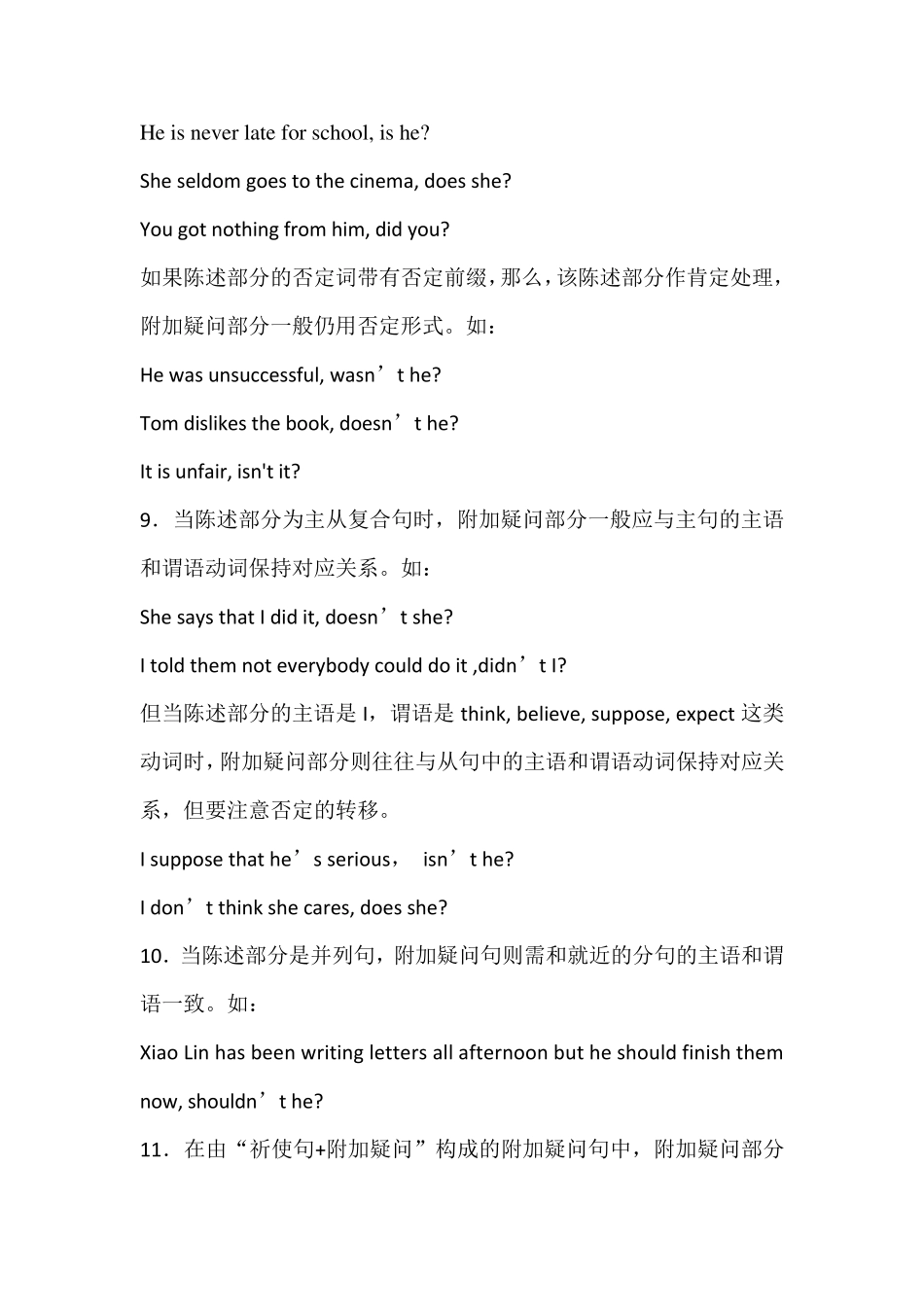1.当陈述部分的主语是I,而句子又用来征询对方的意见时,附加疑问句中的主语用you。如: I find English very interesting, don’t you? I don’t like that film, do you? 2.当陈述部分的主语是everybody, everyone, someone, nobody, no one, somebody, anybody, anyone, none, neither 等合成代词时,附加疑问句中的主语通常用they。但亦可用he,尤其是nobody, no one 等作主语,具有否定概念时。如: Everyone is here, aren’t they? No one knows about it, do they? Somebody phoned while I was out, didn’t they? Everyone enjoyed the party, didn’t they? Nobody wants to go there, does he? 3.当陈述部分的主语是不定代词 everything, nothing, anything, something 时,反意疑问句中的主语一般用it,不用they。如: Everything seems all right now, doesn’t it? Nothing is kept in good order, is it? Something must be done to stop pollution, isn’t it? Something is wrong with my radio, isn't it? 4.当陈述部分的主语是指示代词 this, that 或 these, those 时,附加疑问句中的主语分别用it 和 they。如: This is important, isn’t it? That isn’t correct, is it? This is a plane, isn't it? These are grapes,aren't they? These are your friends Tom and Jack, aren’t they? 5.如果陈述部分是以代词 one 作主语,附加疑问句中的主语在正式场合用 one,非正式场合用 you,在美国英语中,在非正式场合还可以用he。如: One should be ready to help others, shouldn't one? One can’t be too careful, can one?或 can you? One should do his duty, shouldn’t he? 6.如果陈述部分用 I’m…结构,附加疑问部分一般用 aren’t I/ain’t I/am I not。如: I am strong and healthy, aren’t I. I am working now, ain’t I. 7.当陈述句为 there be 结构时,附加疑问句中的主语也用 there。如: There’s no help for it, is there? There’s something wrong, isn’t there? 8.陈述部分带有 seldom, hardly, never, rarely, few, little,nowhere, nothing, not, no, no one...


